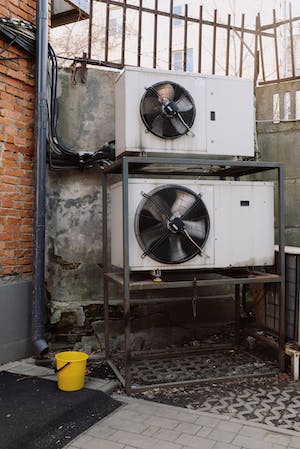How Does Air Conditioning Work?
by siteadmin

Air conditioning is a key component of central heating and cooling systems that ensure your home or business remains more comfortable, so understanding its operation is crucial to selecting an effective system that fits your individual needs.
Air conditioners use phase conversion processes to convert liquid refrigerant to gas and back again for cooling purposes, providing three times as much energy as the compressor can use to move.
Refrigerant
Refrigerator fluid is an integral component of how air conditioning operates, absorbing indoor heat before dissipating it into the atmosphere outside.
Refrigerator fluid has a lower boiling point than water, enabling it to quickly and efficiently evaporate into the atmosphere, thus requiring less energy to transfer indoor heat outside.
Compression is the first part of refrigeration cycle. A compressor takes liquid refrigerant and compresses it, turning into gas thereby raising its temperature and increasing temperature by 1oF.
Refrigeration gas refrigerant then travels to a condenser, which contains fans to circulate it around its pipes, cooling it.
Once the refrigerant is cool enough to be handled by your home's refrigeration system, it returns to the compressor where its cycle continues until your home's metering device indicates that temperatures in your home have reached exactly where you wanted them.
Compressor
Compressors are essential in making air conditioning systems function effectively. By pumping refrigerant through your system, they allow it to absorb heat and release it outside. Without compressors, home temperatures would only ever cool to one preset point without being adjustable at any given point in time.
The compressor is a metal container with two openings: one to take refrigerant from an evaporator and another that sends pressurized refrigerant out through its condenser coil. There are various kinds of compressors, including reciprocating and scroll models.
Reed valves in a compressor serve to regulate the entry and exit of refrigerant gas. To operate effectively, these must be securely seated; an improperly seated intake reed valve could allow refrigerant leak into the low side pressure system, raising low side pressure levels while diminishing cooling effect.
Condenser
Condensers are one of the key components in an AC system, often going unnoticed. Situated outside on your roof or yard, this unit works to cool your home by absorbing and dissipating heat depending on season.
Your air conditioning condenser receives gas from its compressor and transforms it to liquid using heat transfer principles – when something heats up, its energy always passes to cooler substances that absorb it more readily than it itself.
Checking the temperature of your refrigerant is easily achievable by looking at it and comparing it with outside air temperatures. If it falls outside its expected parameters, this indicates that its cooling performance has become inadequate and could pose issues for your AC unit.
If your condenser begins acting up, it is advisable to contact professionals. Doing so can prevent more serious issues from developing in the future. Furthermore, for older AC systems it may also be beneficial to regularly replace key components like condensers.
Evaporator
Evaporators coils are an integral part of any air conditioning system, working alongside condenser coils to deliver both heating and cooling to your home.
As liquid refrigerant enters an evaporator coil, it rapidly transforms to vapor by taking up heat from its surroundings – this process is known as change of state.
Evaporator coils are key to the operation of any air conditioning unit; without sufficient refrigeration refrigerant being delivered to them, their ability to expand will become severely limited, compromising your cooling process inefficiently and leading to wasted electricity costs.
Coils must remain free from dirt or grime in order to perform at their optimal. Any buildup can hinder their ability to absorb and dissipate heat efficiently, increasing your energy bills and decreasing indoor comfort levels.
https://www.hvacsaltlakecityut.com/
air conditioning installation north salt lake ut
air conditioning installation salt lake city ut
Air conditioning is a key component of central heating and cooling systems that ensure your home or business remains more comfortable, so understanding its operation is crucial to selecting an effective system that fits your individual needs. Air conditioners use phase conversion processes to convert liquid refrigerant to gas and back again for cooling purposes,…
Recent Posts
- Condon Total Comfort, Inc. Offers Top-notch HVAC Services
- Clearing the Air: Duct Cleaning Alexandria Debunks Common Myths Surrounding Air Duct Cleaning
- Clearing the Dust: Duct Cleaning Louisville KY Shares Tips to Make Your Home Less Dusty
- Exploring the Drawbacks of Duct Cleaning: Insights from Air Vent Cleaning Charlotte
- Grand Prairie HVAC Service: Your Trusted HVAC Company in Texas
